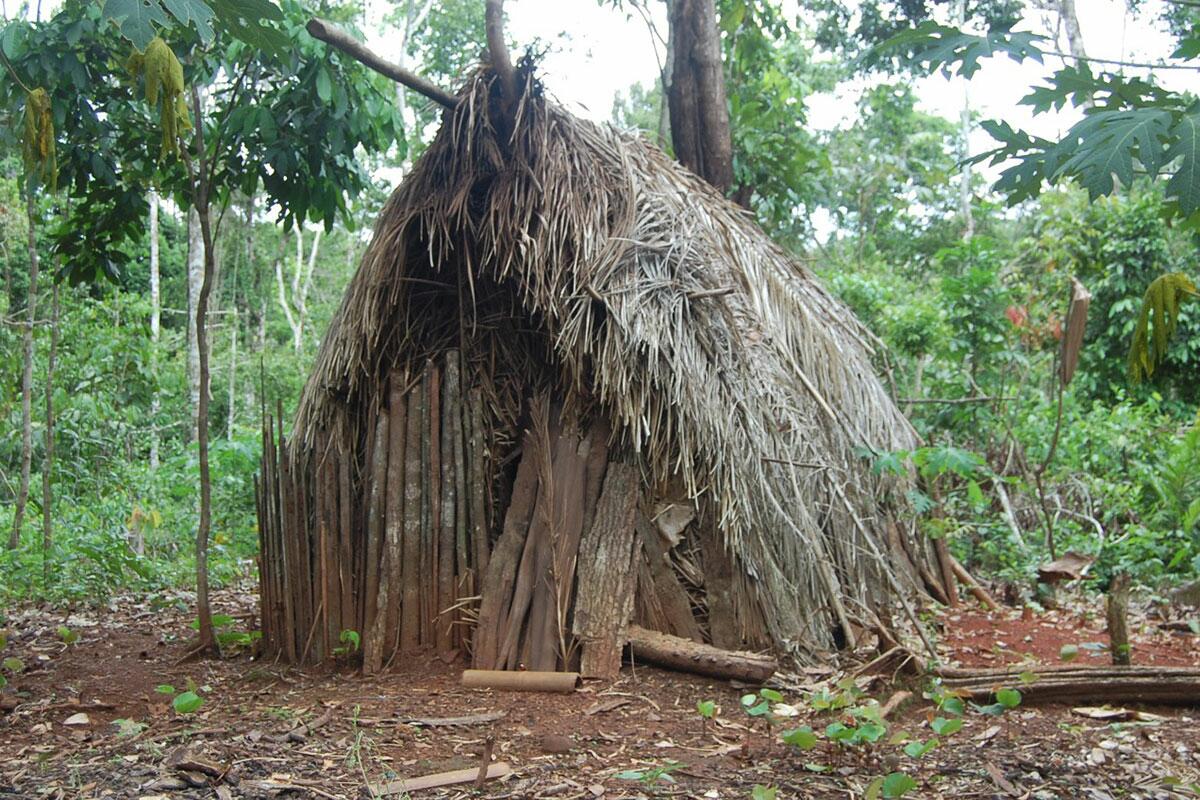The last Indigenous survivor of the genocide of an entire people was found dead in the deep Amazon Forest, in the state of Rondônia, this past August. He lived alone, always avoiding contact. How could he trust anyone after everyone he knew had been murdered?
Thanks to Brazil’s federal agency of Indigenous affairs, Funai, this man from the Tanaru Indigenous Territory was able to stop running and spend the last 25 years of his life in a protected area. Even though he was the last surviving member of his people, he preferred solitude. Nobody knew his name or the name of his people. His secret was safeguarded through a public policy of not forcing contact.
He was known as Tanaru, after a river running through his land, and was also nicknamed the “Man of the Hole,” because he had the habit of digging deep holes in his huts. Although he didn’t have a birth certificate or a Brazilian social security number, his right to remain in isolation was respected. At least until the day he died.
Tanaru was found lying in his hammock, adorned with feathers that were not part of his usual costume. He was dressed in ritualistic fashion, and all indications are that he had performed his own funeral rites.
Then the Brazilian State moved in, with its papers, pens, agents, equipment and transport. They took Tanaru’s body to the city of Brasília to determine whether violence was involved in his death. For 55 days, nothing was heard about Tanaru. When pressed, Funai limited its reply to “the body is being examined.”
Now reports have surfaced that two boxes of bones were sent to the Federal Police station in the city of Vilhena, in Rondônia. The Brazilian State removed the body of an Indigenous man adorned with feathers from his death bed and returned two boxes of bones.
This man, who for decades fought to live free from the rest of humanity, could not escape the State’s colonizing zeal in his death. For them to return him inside two boxes, they must have sliced Tanaru up, tested him, examined him, butchered him. Where is his flesh? Was his ritual plumage erased from the official records? By what authority did the State treat him as an indigent? Who consented to this examination of the corpse?
Two boxes of bones rest on a shelf in a police station in a small town in the deep interior of Brazil. Inert, surrounded by coffee cups, official files, and rubber stamps. That, for the moment, is Tanaru’s resting place.
Tanaru’s memory, his body, and his right to burial were violated when the State, perhaps acting with the best of intentions, tried to determine if his death had involved violence. The findings suggest that was not the case. At least, not until the State arrived.
The State denied the corpse its integrity even at the most material level, in its status as an object, as a thing entitled to legal protection. Because he was the last, the very last, the State presumed no one would want to say goodbye or go through the rites that help others resign themselves to someone’s passing.
They were wrong.
The State denied the deceased the dignity of a last wish—because, from a legal standpoint, a dying individual has the right to control the process of their own death. Little is left to be done with the body, now vilified. But there is much in Tanaru’s history that we should attend to. Burying him with dignity is not only about laying his mortal remains to rest but also about manifesting his right to dignity in concrete terms, by recording and preserving memory.
Our services for the dead and our funeral rites—as practiced by Indigenous and non-Indigenous alike—speak to the perpetuation or renewal of life. These are moments for assigning new meanings to the departed and also to us, as survivors. When we allow the State to persecute and murder an entire people and then to violate the memory and corpse of their last surviving member and prevent his burial, it is because we have lost our ability to empathize, resignifiy, and feel compassion.
What kind of society have we become when we authorize the State, in the twenty-first century, to wreak destruction even greater than physical death itself, wiping out the identity of an entire people?
If there is dignity in life, there must be dignity in death. To guarantee Tanaru this dignity is to respect the memory of all Indigenous peoples in Brazil—of those disappeared through genocide and those who have survived and continue to resist.
Not a single member of any Indigenous people now inhabits the land where Tanaru lived. It was on this land that he dug his holes, planted his food, collected rope fibers for weaving his baskets and hammocks, and hunted the macaws whose plumage adorned his body for death. It is there, alongside his dead, that he should be buried, and no argument justifies anything else. Should anything else occur, the only explanation can be inhumanity and horror—to which, unfortunately, we are all but inured.
Carolina Ribeiro Santana. Attorney and Indigenist expert. PhD candidate in Law at the Universidade de Brasília. Visiting researcher at the Universidade de Lisboa. Advisor to the Observatory for the Human Rights of Uncontacted and Recently-contacted Peoples (OPI) and representative of the Indigenous Peoples Rights International in Brazil. Member of the Work Group “Indigenous Rights: access to justice and procedural singularities,” of the National Justice Council, and member of the Superior Electoral Court’s Commission to Foster Indigenous Participation in the Electoral Process.
Translated by Diane Whitty

Previously unpublished photo showing the home of the indigenous “Man of the Hole”, who was the last of his tribe. Credit: Private archive





